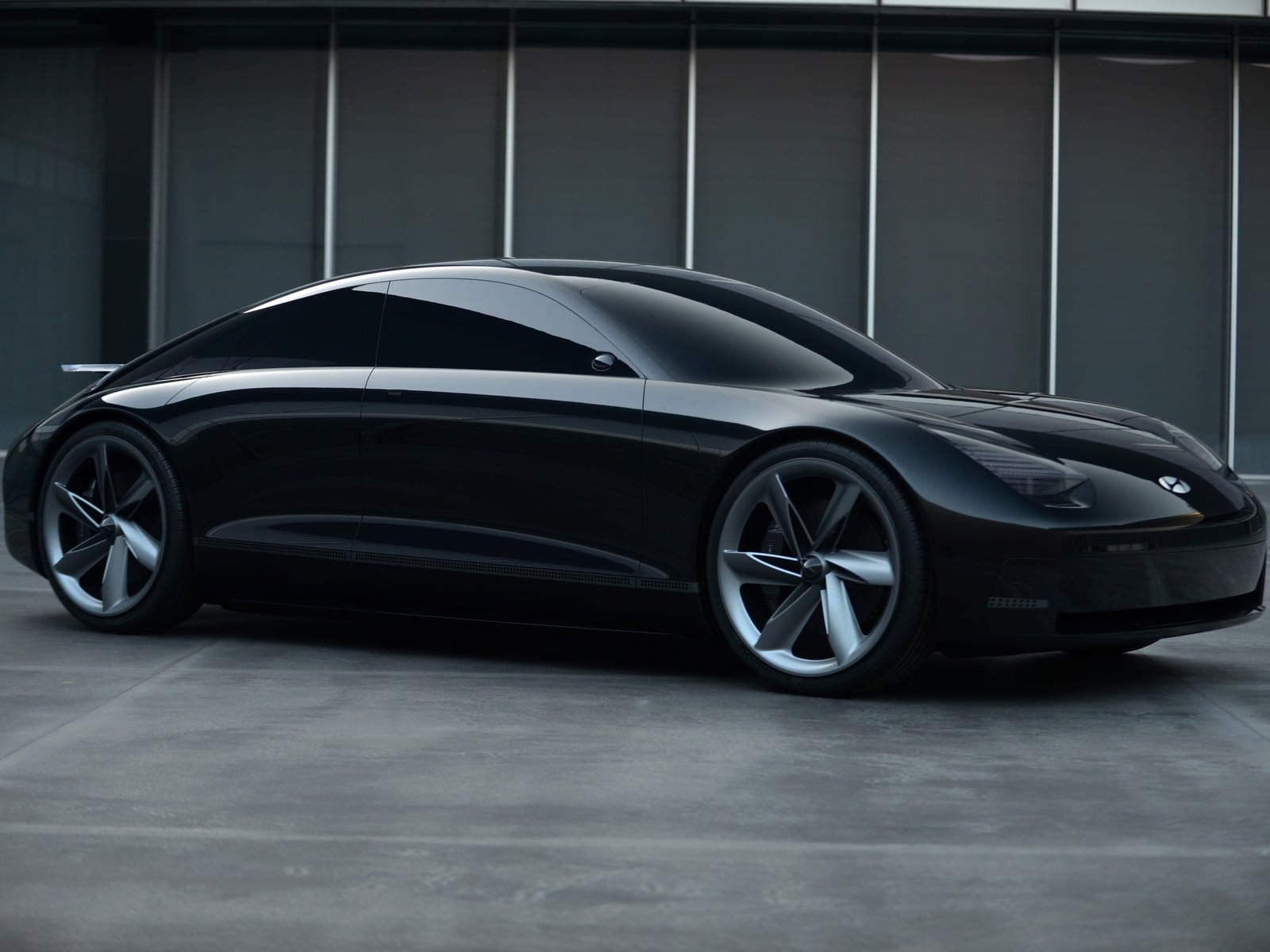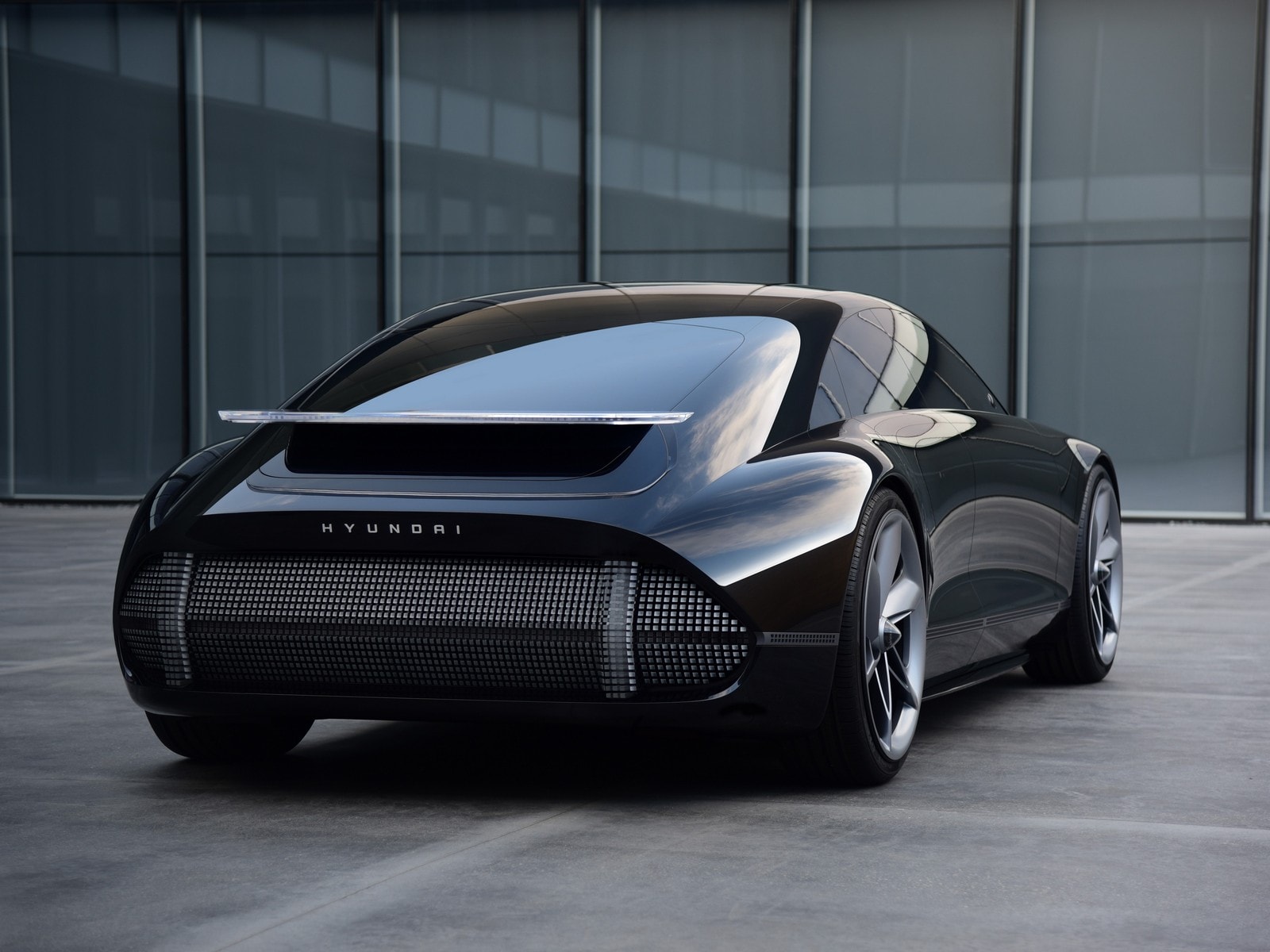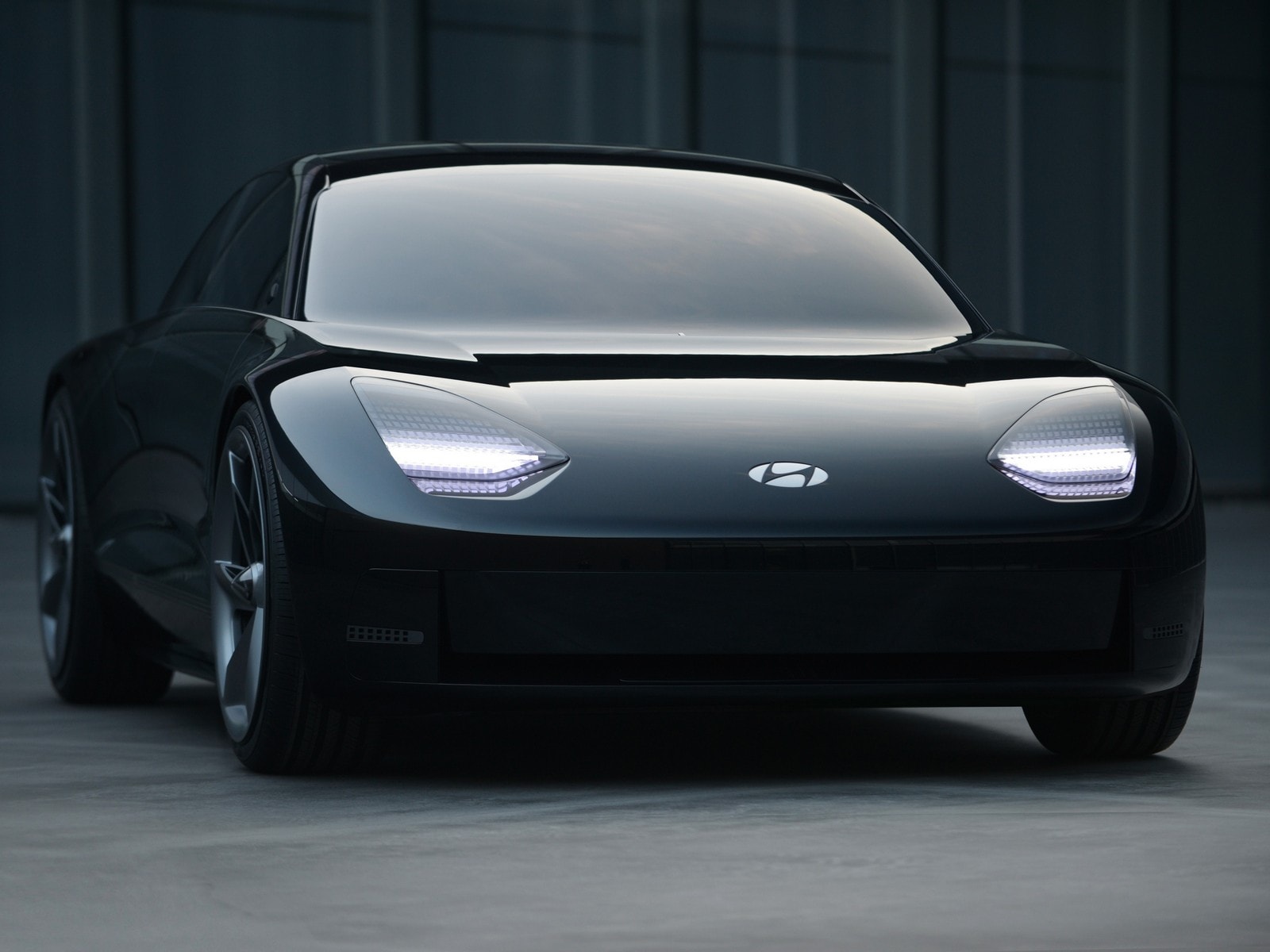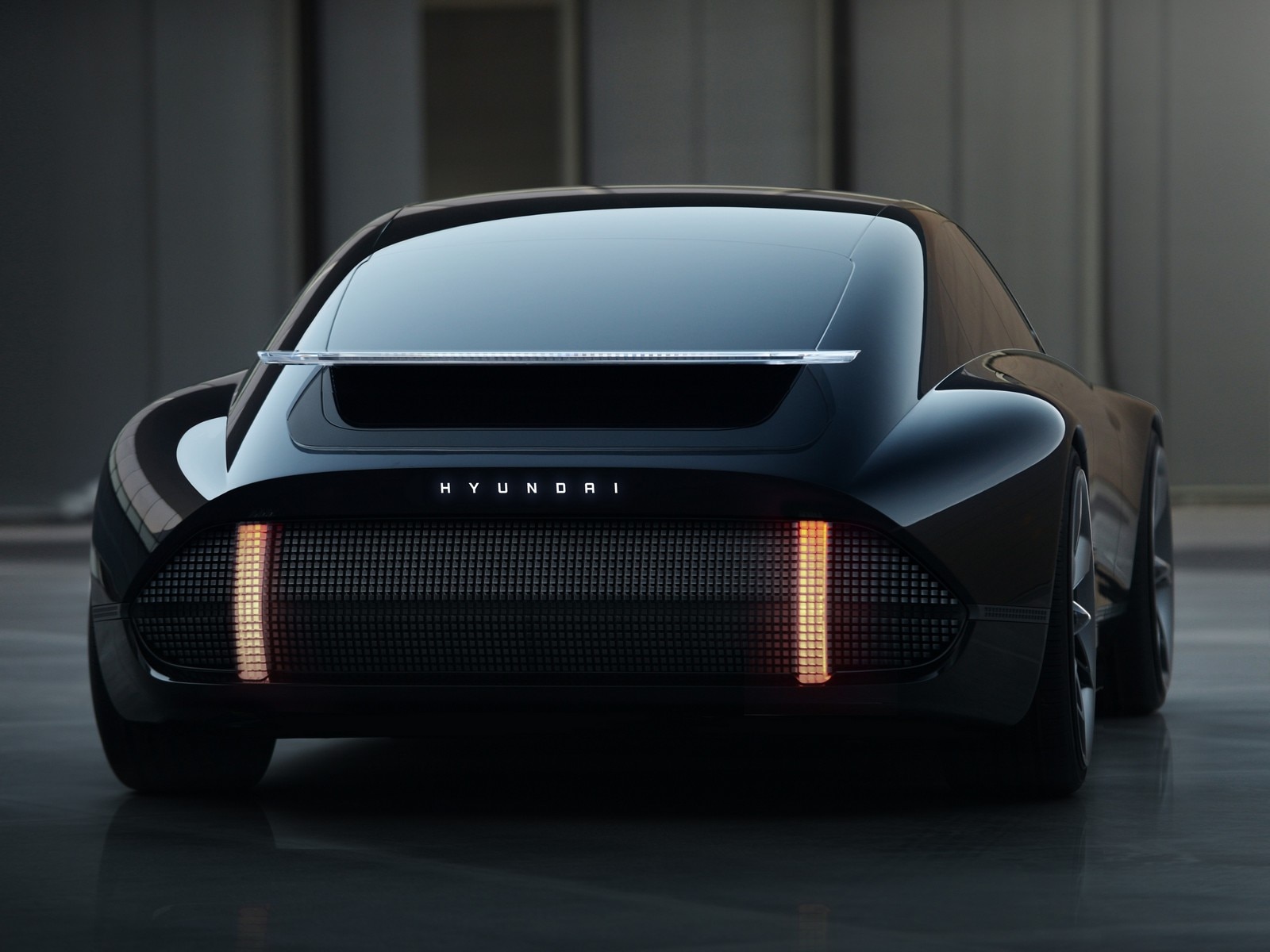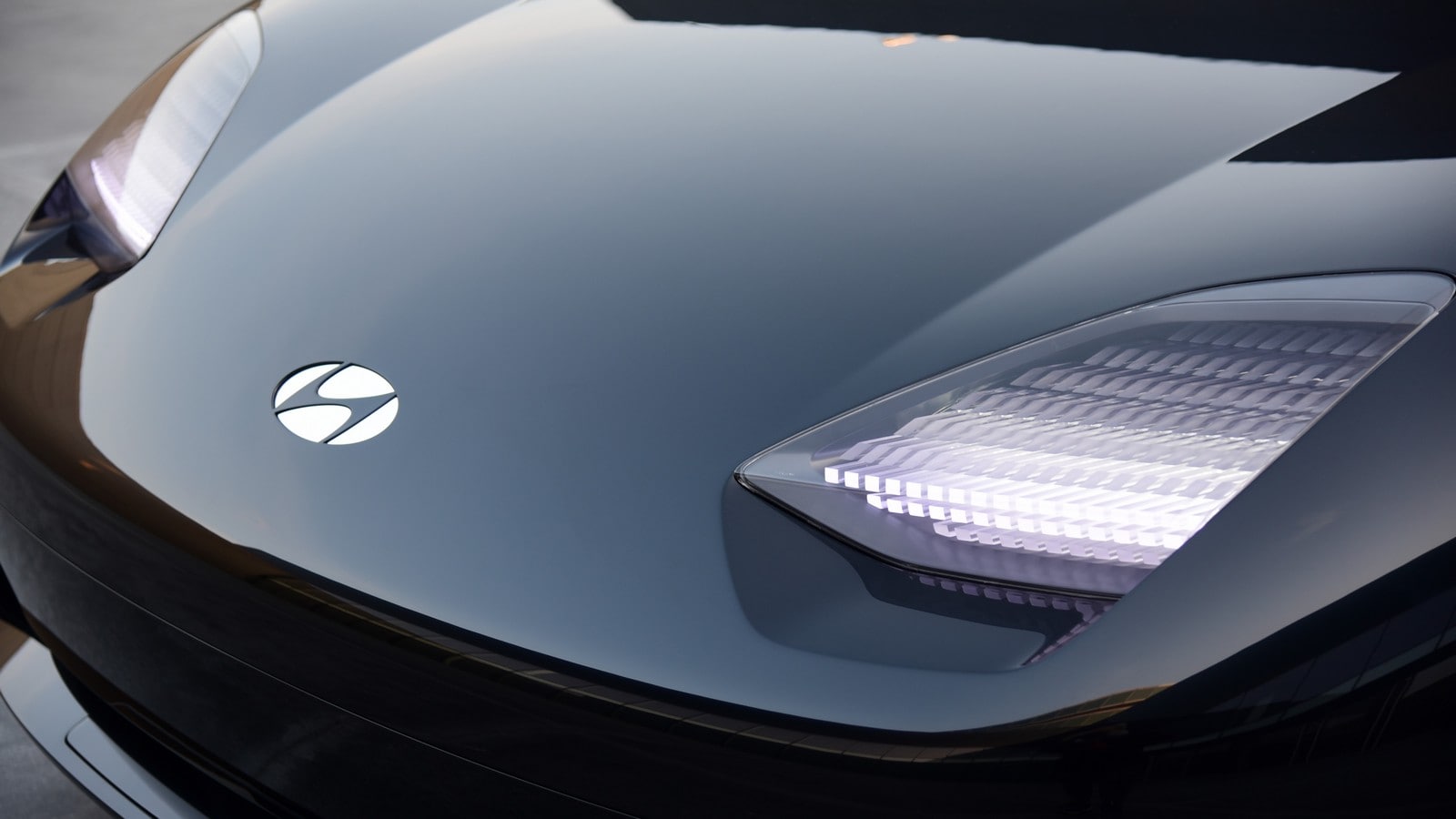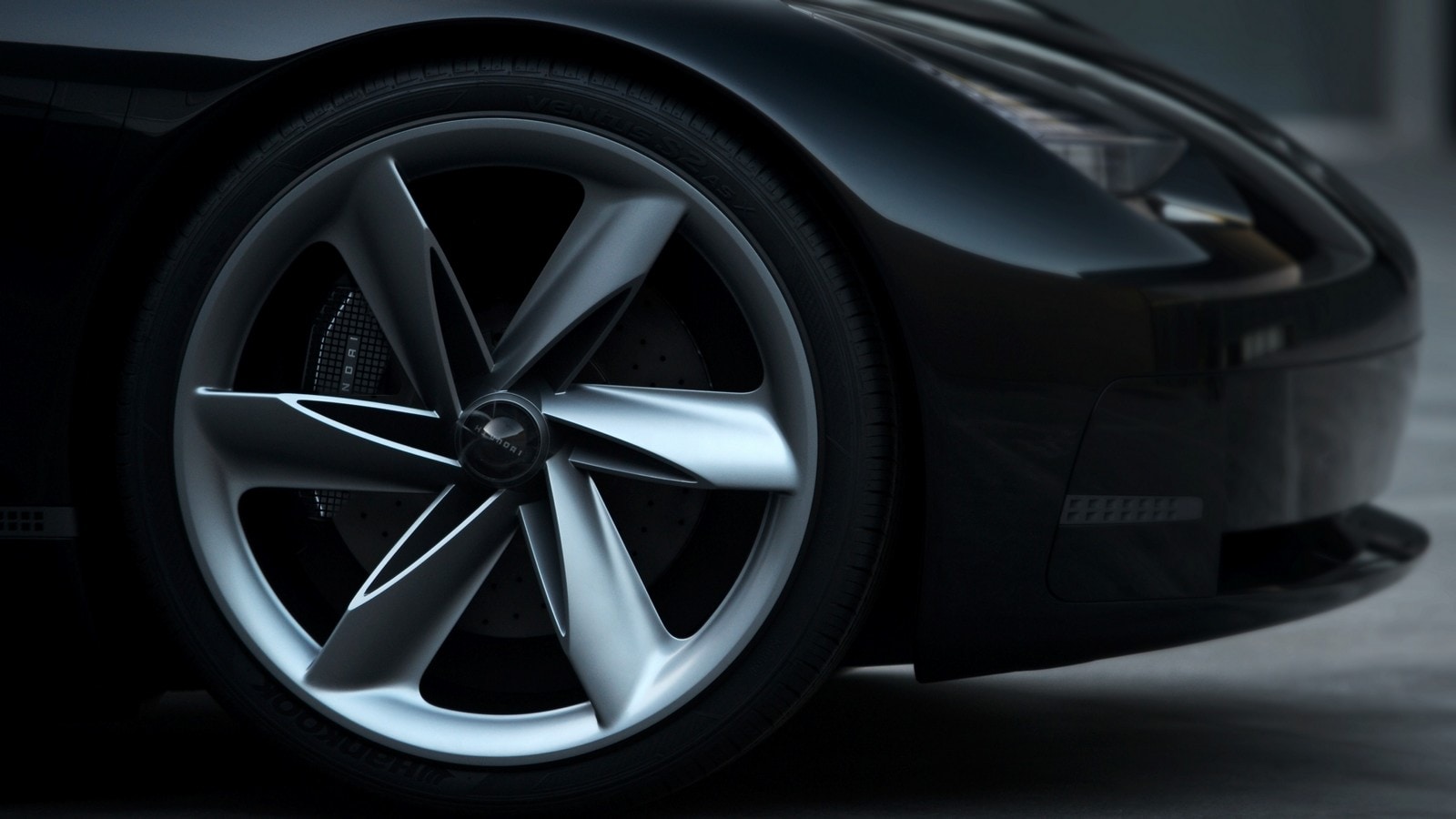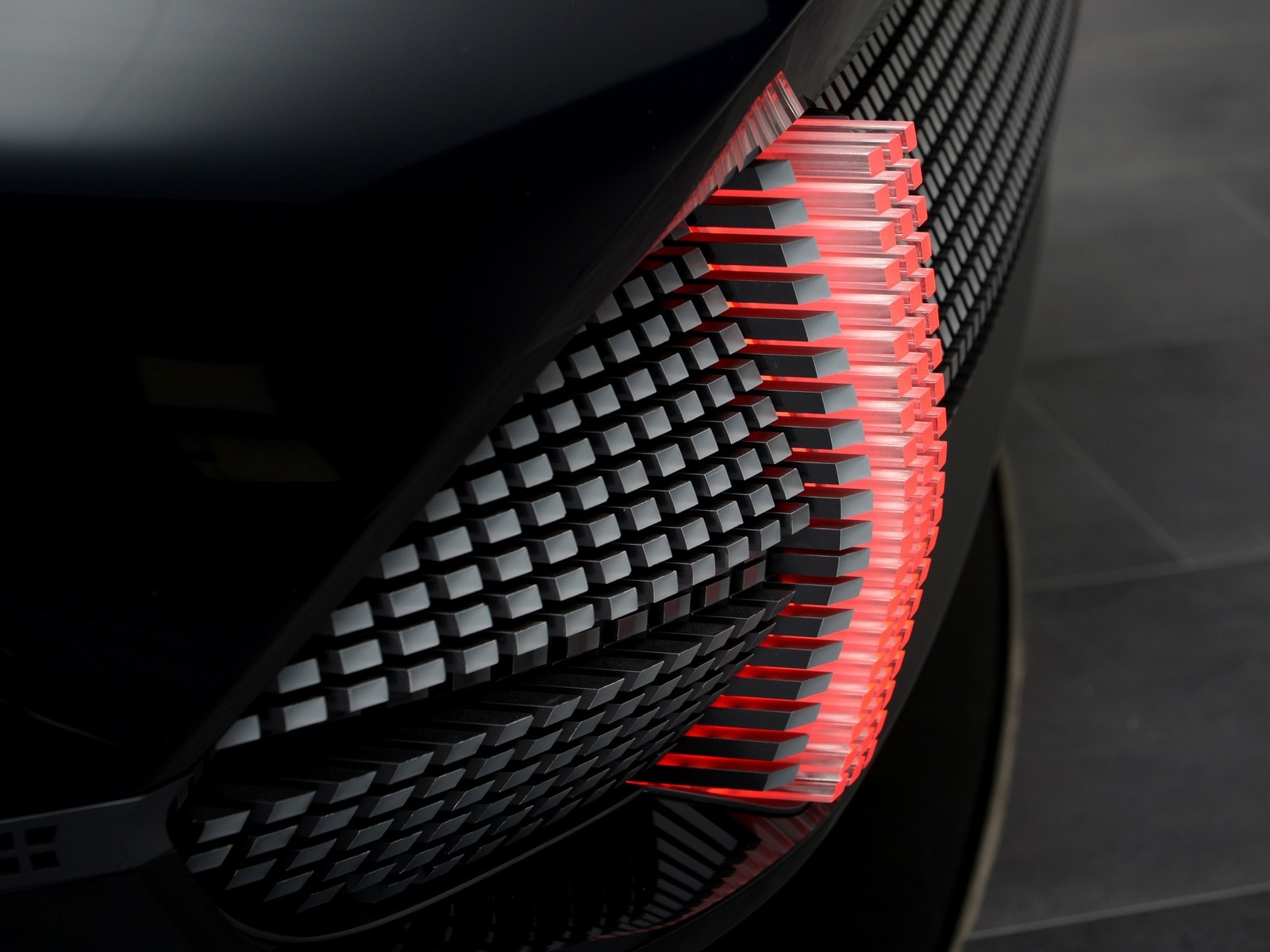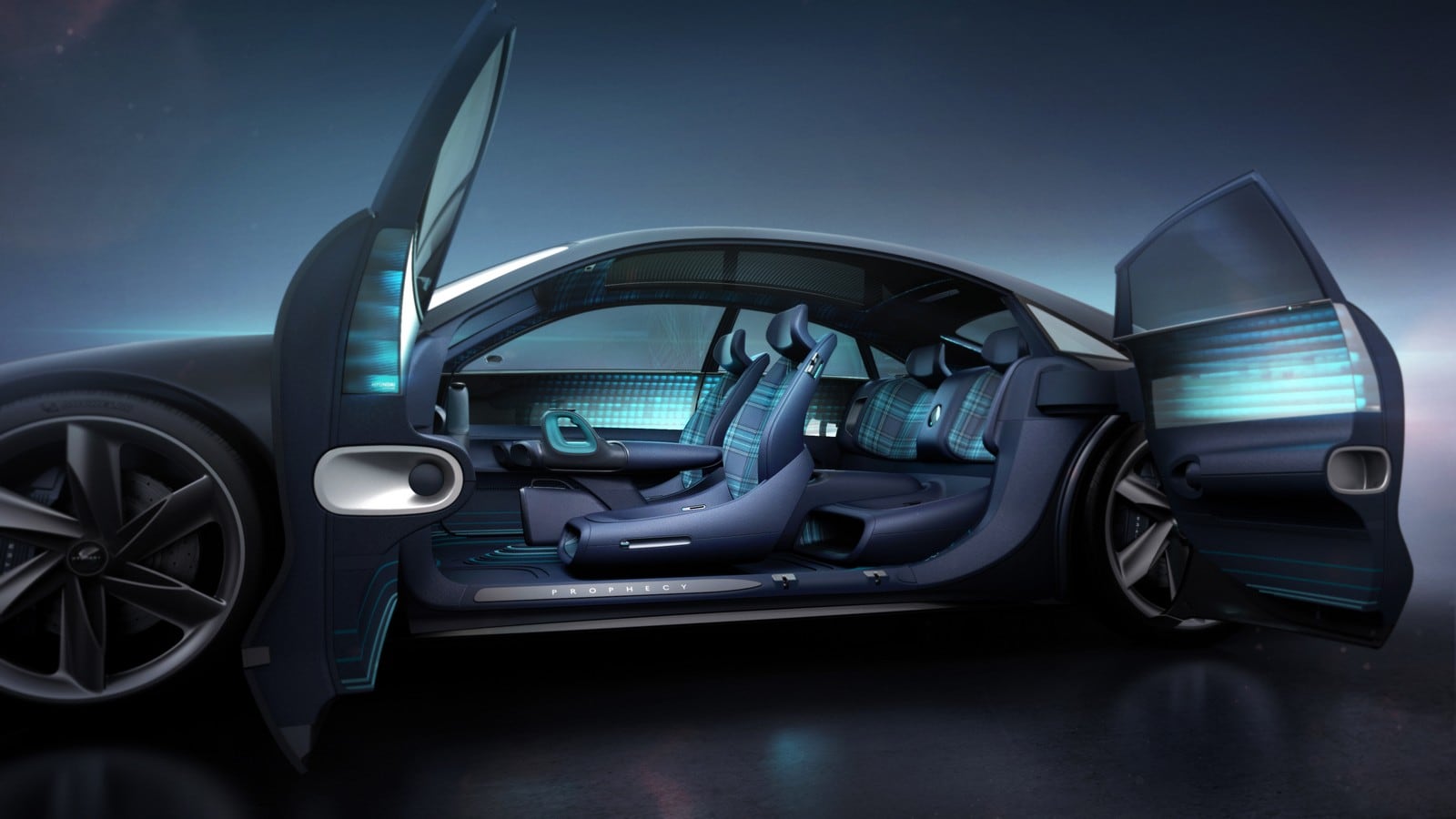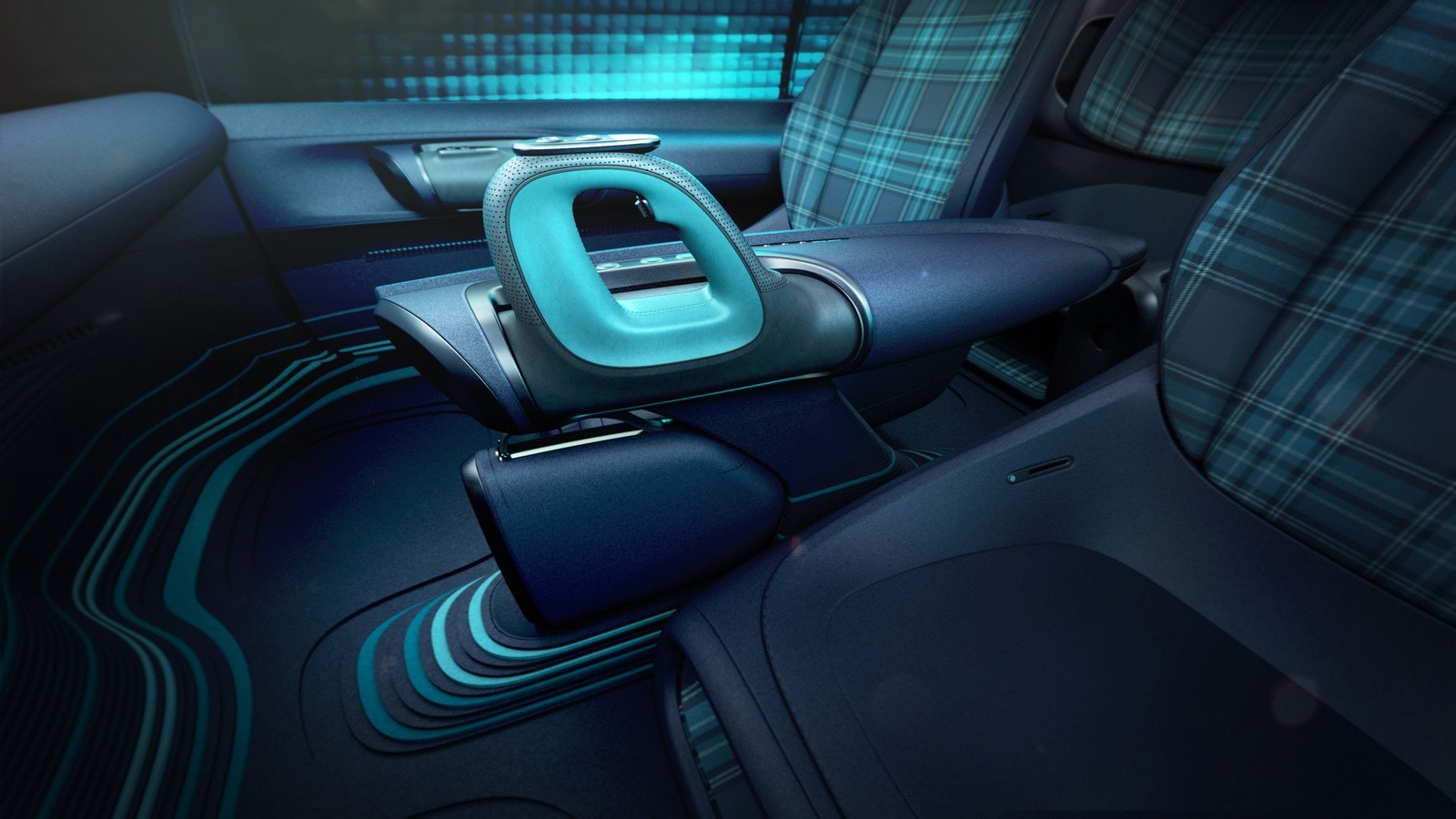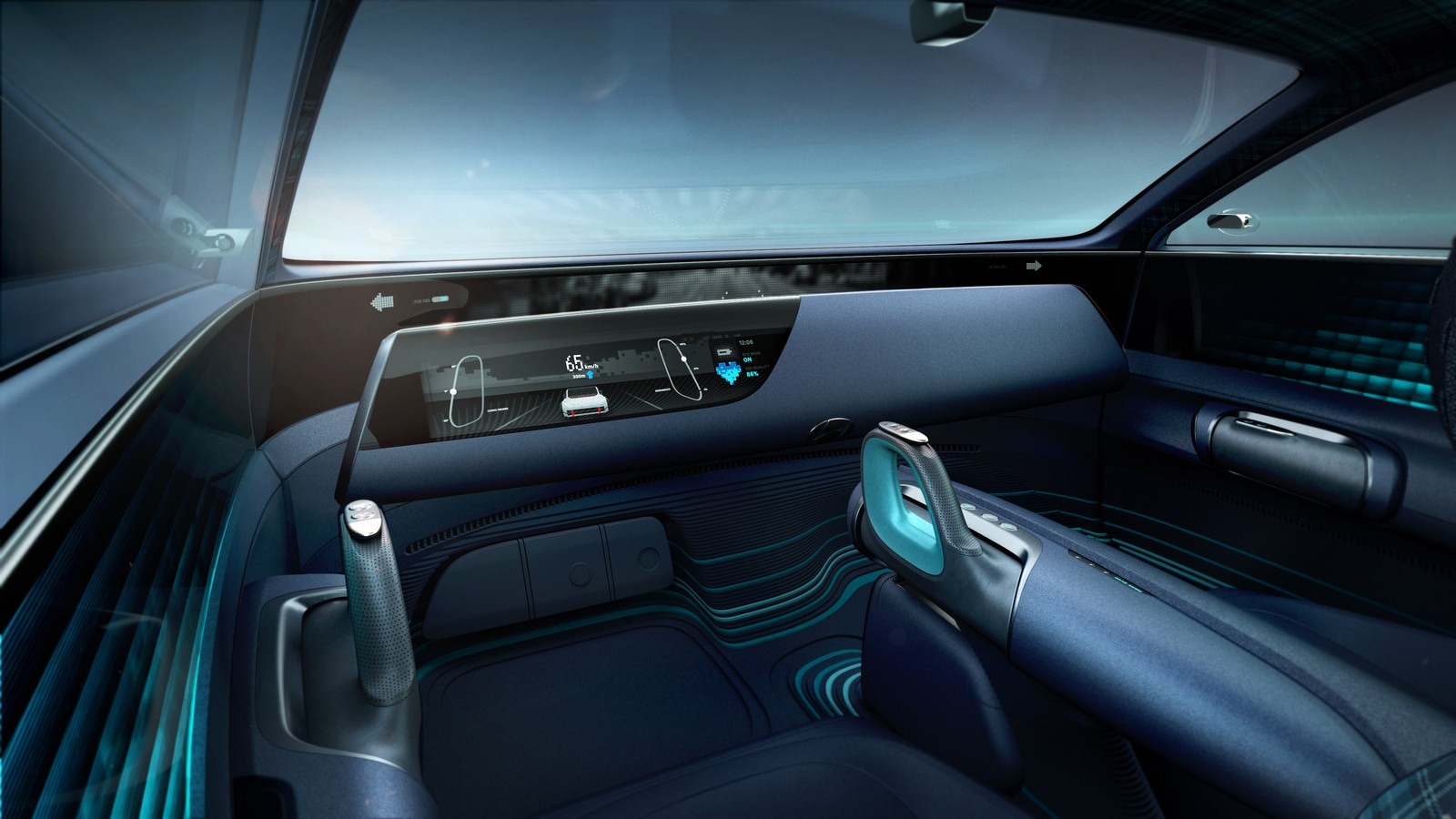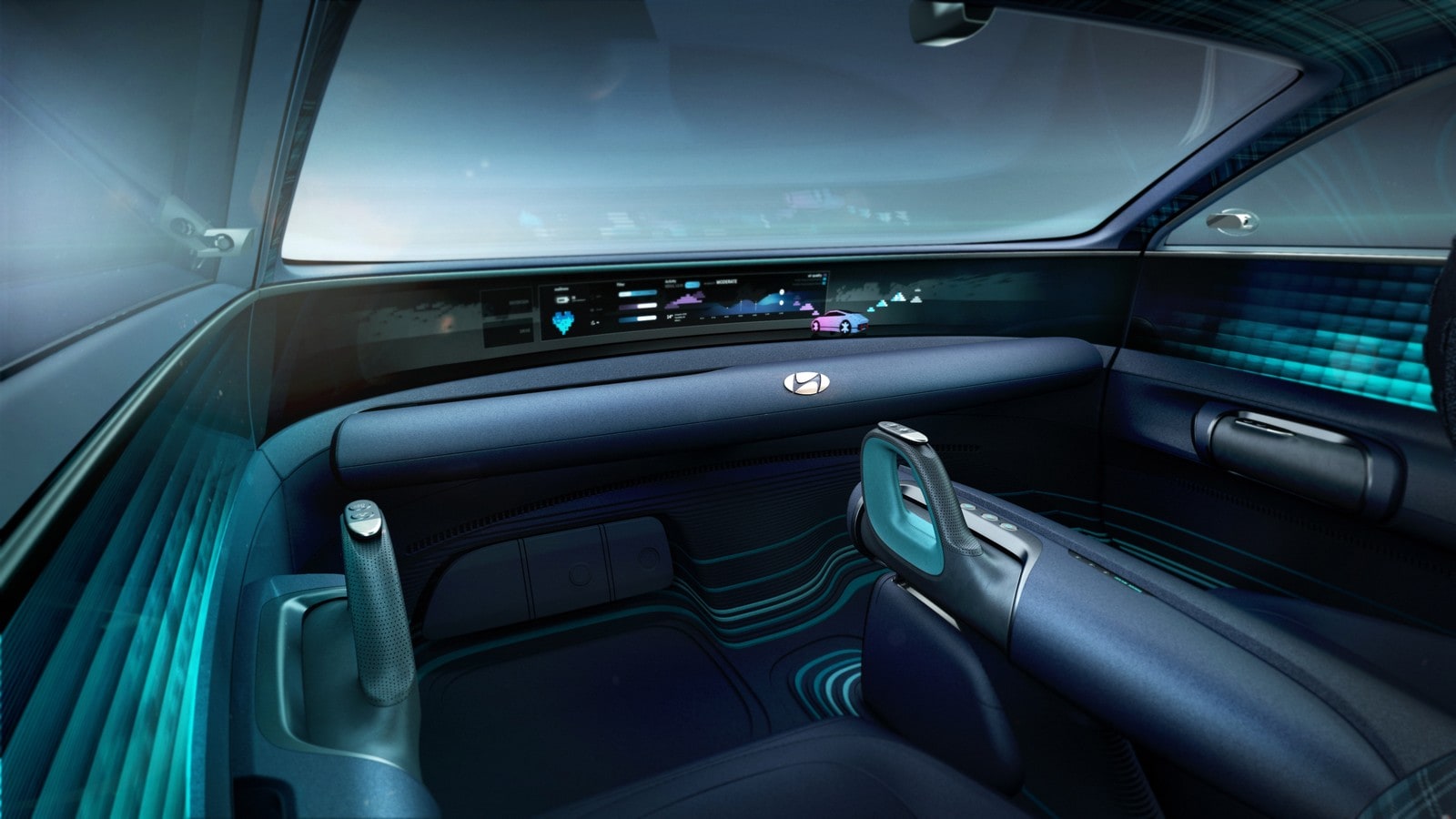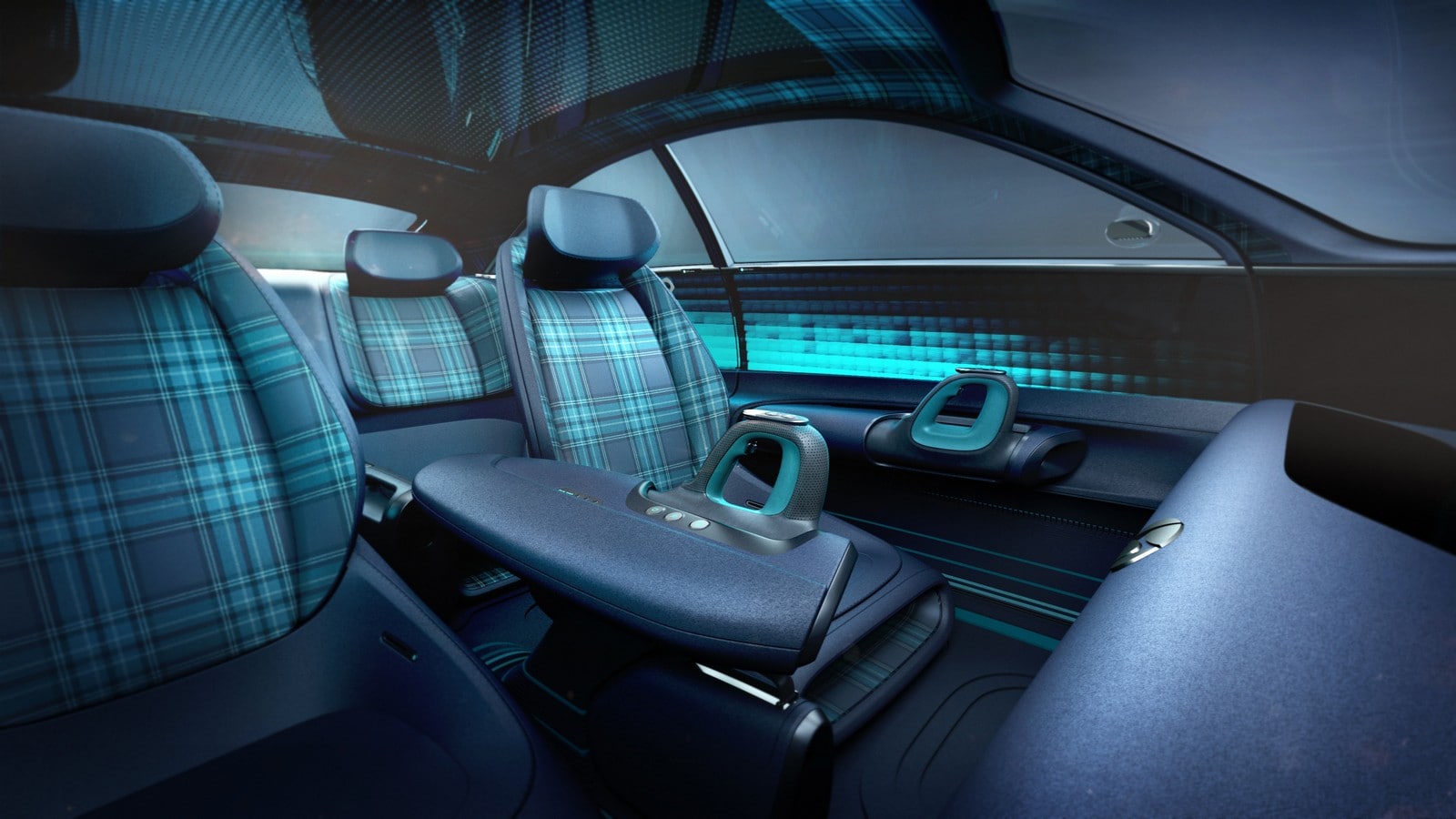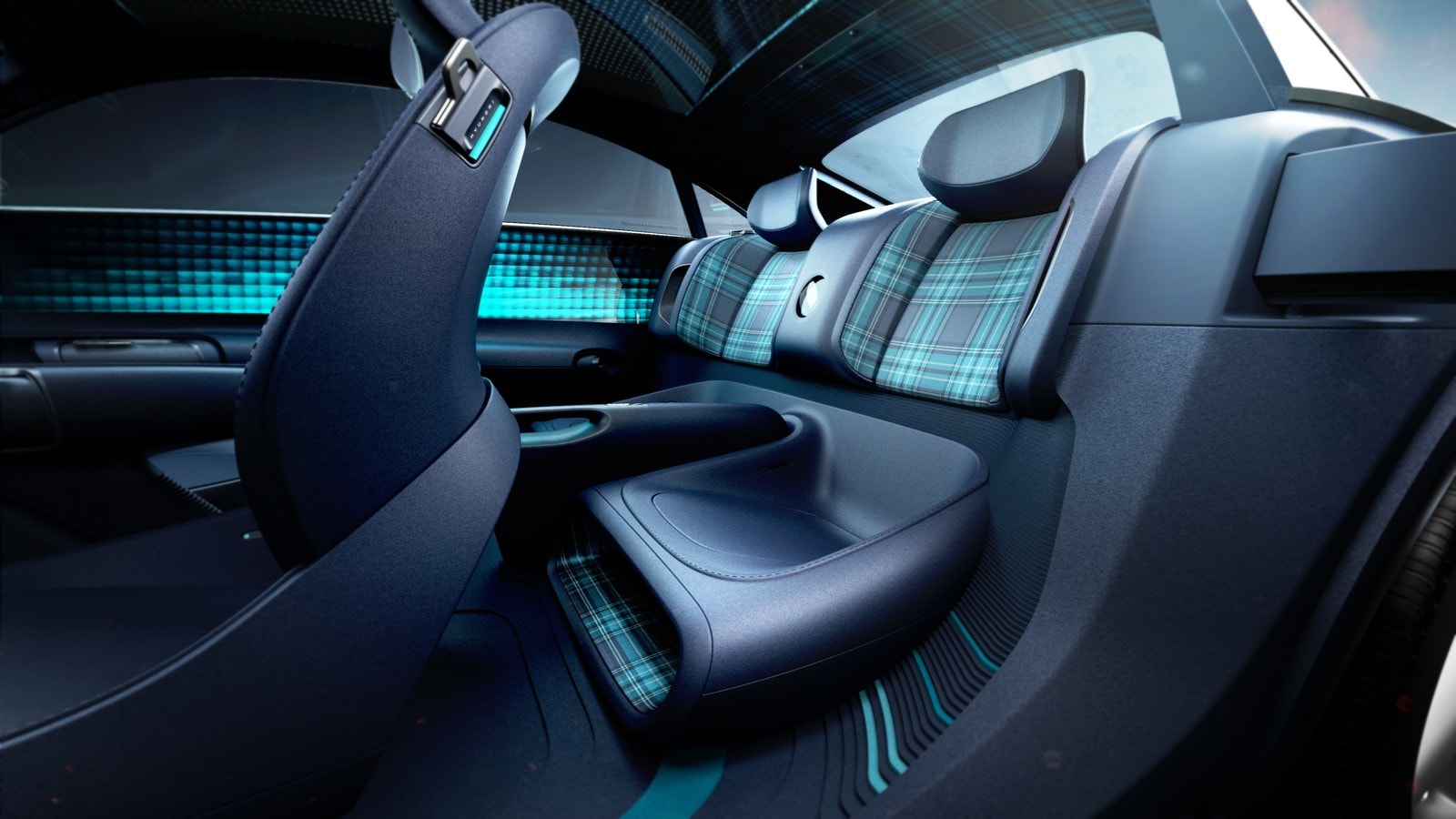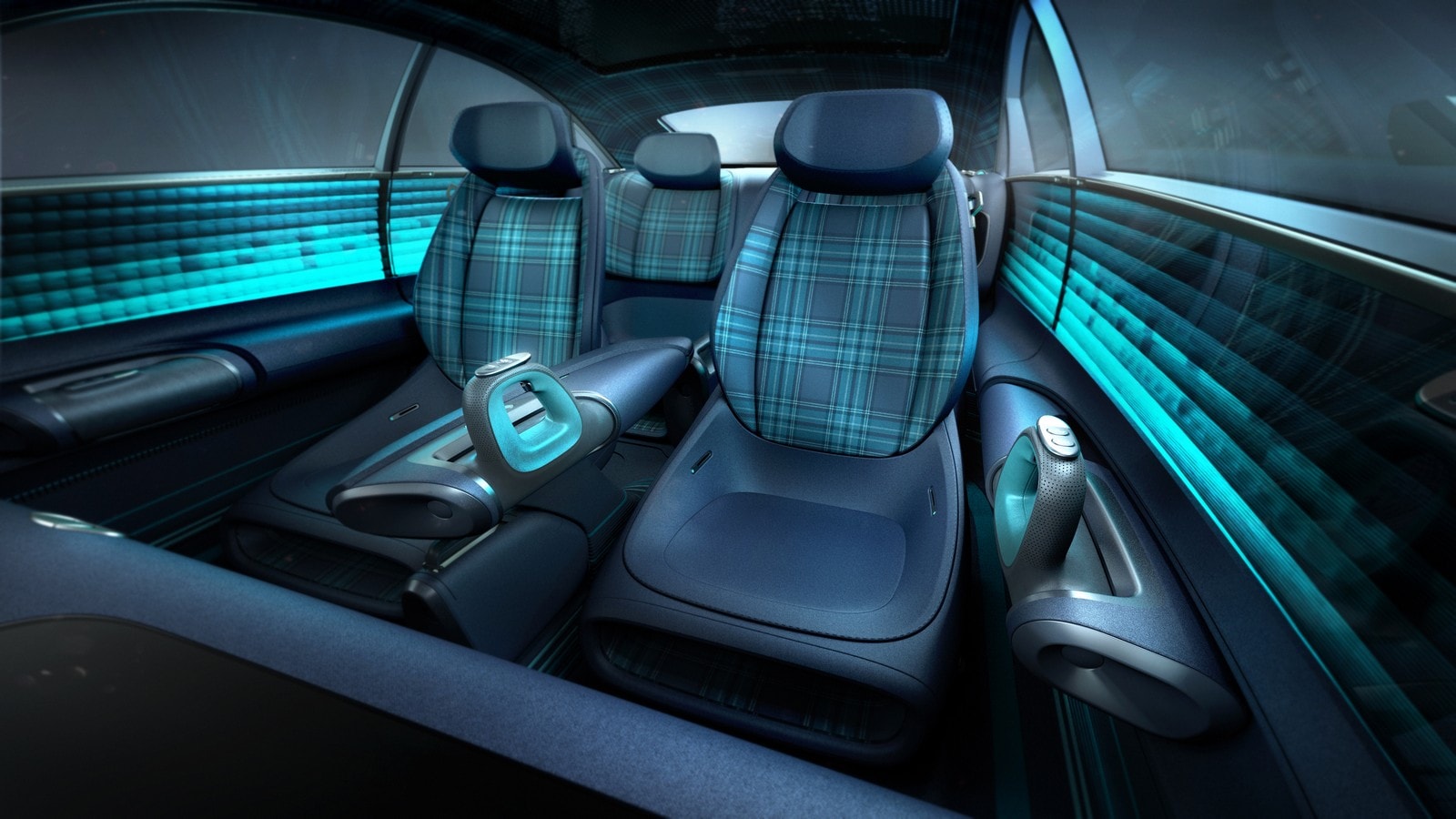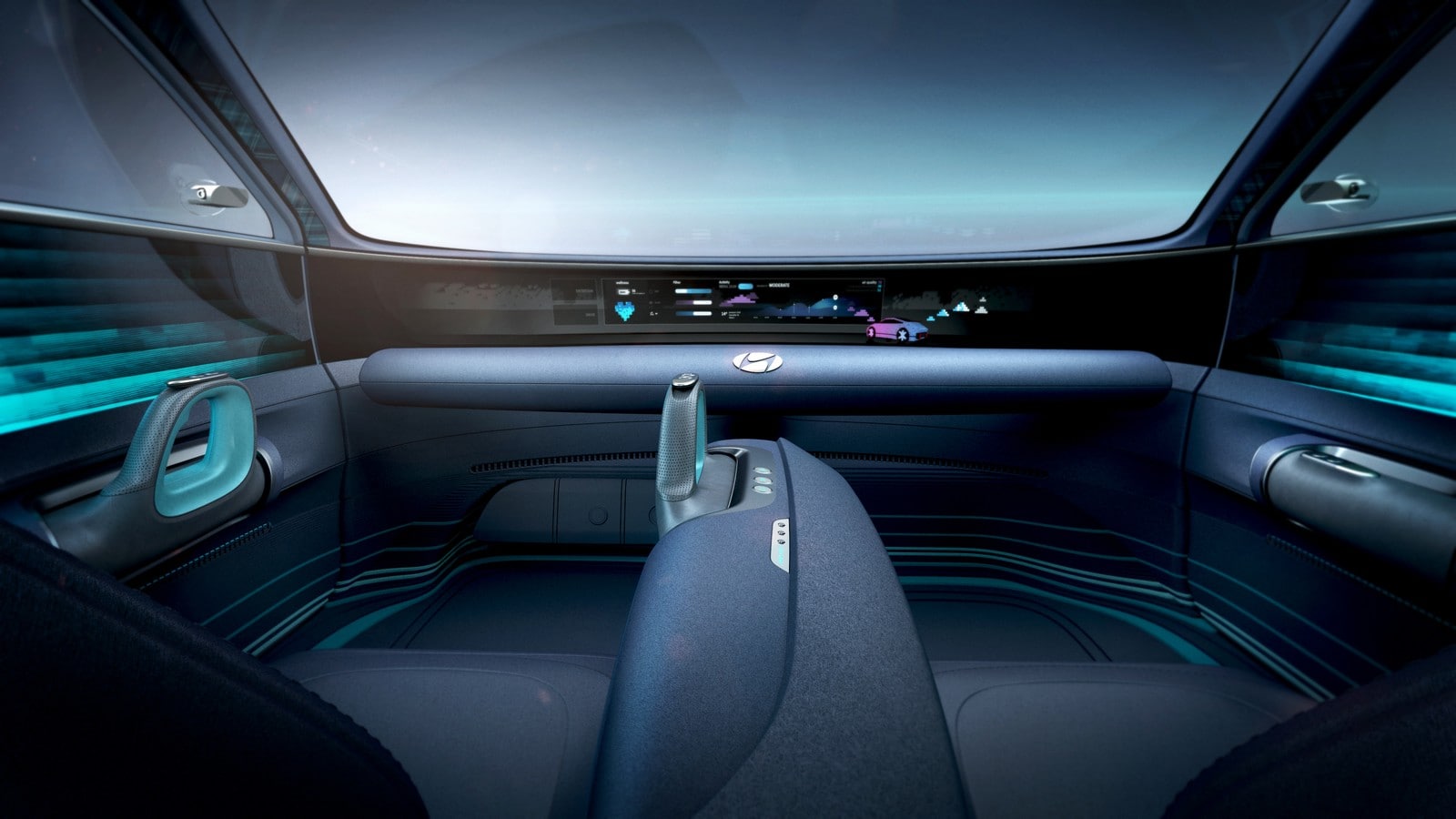- EV concept looks far into the future
- 4-door hatchback with center-opening doors
- Joysticks replace the steering wheel
- Organic shapes used inside and out
- Previews design elements for future products
The Hyundai Prophecy is a low-slung battery-electric 4-door touted as a representation of the brand’s design themes of Sensuous Sportiness and Optimistic Futurism. The former was seen in last year’s “45” EV concept, and yet the Prophecy represents a major departure from that car’s flat surfaces and 45-degree angles.
Aero-shaped exterior
The Prophecy has a smooth, rounded shape that is minimalist and unadorned. The front features large headlamps, an illuminated central Hyundai logo, and a discrete lower air intake below the bumper. That opening sends cooling air to the battery pack. The side view shows a curved roofline that extends in an unbroken arc all the way to the rear of the body. The doors are center-opening, and there is no B-pillar. Additional air intakes below the doors duct fresh air into the cabin at floor level.
The wheel design pulls air along the body sides. The overall body shape tapers toward the rear, where a large decklid spoiler aids aerodynamics. The taillights are a constellation of individual pixels that spans the width of the vehicle. The headlights have a similar light signature, as does the illumination on the rear spoiler. Hyundai says upcoming production models will use this design detail.
Soothing interior
The Prophecy’s compact electric powertrain makes for an extra-large passenger compartment. Hyundai describes the interior as “a lifestyle space of refinement and comfort.” The dashboard display screen extends across the interior and wraps around onto the doors. There is no steering wheel. Instead, twin D-handle joysticks, one located on the door panel and one on the center console control the car when not in autonomous mode. When the car is in active-driving mode, the lower dash pad rotates to display additional instruments to the driver. Plaid upholstery on the seatbacks is the lone retro touch. Wool-based carpets incorporate multi-hued stripes that ring the cabin. The Prophecy’s color choices are meant to be soothing and promote relaxation.
Minimalist mechanicals
Hyundai gives no details of the Prophecy’s powertrain beyond the fact that it’s electric. And there’s scant detail on the car’s drive modes other than to say that the Prophecy could switch between driver-operated and autonomous operation. Instead of focusing on the hardware, the Hyundai Prophecy uses design to explore the idea of harmony between man and machine. It’s a theme of more and more recent concepts. Hyundai’s head of design SangYup Lee says of the Prophecy, “Our aim is to forge a more emotional connection between humans and automobiles.” It appears that’s a goal the whole industry is working toward.
